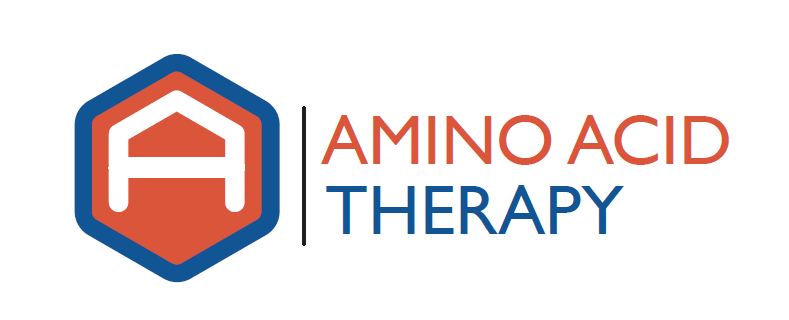by aatadmin | Sep 26, 2018 | Amino Acid Therapy, dopamine dominance, Parkinson's Disease, restless legs
 Dyskinesias are abnormal, uncontrolled, involuntary movements that are often associated with Parkinson’s disease (PD) and therapies used to manage Parkinson’s disease. Many people assume dyskinesias are due to too much L-dopa/dopamine in the system. However, there are many known types of dyskinesias that require very different corrections. (more…)
Dyskinesias are abnormal, uncontrolled, involuntary movements that are often associated with Parkinson’s disease (PD) and therapies used to manage Parkinson’s disease. Many people assume dyskinesias are due to too much L-dopa/dopamine in the system. However, there are many known types of dyskinesias that require very different corrections. (more…)
by aatadmin | May 2, 2018 | Amino Acid Therapy, dopamine dominance, Neurotransmitters
 Many people suffer from histamine-induced allergies. This represents a collapse of the catecholamine cascade which results in the person’s system being overwhelmed with histamine. Amino acid therapy may present a novel approach to rebuilding the catecholamine system and restoring balance that can lessen and even eliminate histamine-induced allergies. (more…)
Many people suffer from histamine-induced allergies. This represents a collapse of the catecholamine cascade which results in the person’s system being overwhelmed with histamine. Amino acid therapy may present a novel approach to rebuilding the catecholamine system and restoring balance that can lessen and even eliminate histamine-induced allergies. (more…)
by aatadmin | Apr 18, 2018 | Amino Acid Therapy, dopamine dominance, Parkinson's Disease
 People want to save money – I get it. I want to save money wherever and whenever I can.
People want to save money – I get it. I want to save money wherever and whenever I can.
However, it doesn’t save you any money if you can never get better. (more…)
by aatadmin | Mar 21, 2018 | Amino Acid Therapy, dopamine dominance, Symptoms of Neurotransmitter Imbalance
 In the process of optimizing a person’s neurotransmitter function, it is not uncommon for people to experience transient states of nausea. This is particularly common for those that are dopamine dominant. However, getting this nausea under control as quickly as possible is crucial for long-term success. (more…)
In the process of optimizing a person’s neurotransmitter function, it is not uncommon for people to experience transient states of nausea. This is particularly common for those that are dopamine dominant. However, getting this nausea under control as quickly as possible is crucial for long-term success. (more…)
by aatadmin | Feb 21, 2018 | Amino Acid Therapy, dopamine dominance, Parkinson's Disease, Symptoms of Neurotransmitter Imbalance
 The sensation that a person’s heart races, often described as “heart palpitations”, after taking a dose of amino acids occurs in roughly 10% of the people we see that are following a dopamine dominant protocol. (more…)
The sensation that a person’s heart races, often described as “heart palpitations”, after taking a dose of amino acids occurs in roughly 10% of the people we see that are following a dopamine dominant protocol. (more…)
by aatadmin | Feb 7, 2018 | Amino Acid Therapy, dopamine dominance, Parkinson's Disease
 I receive dozens of inquiries on a monthly basis about an amino acid protocol that people with Parkinson’s Disease (PD) can use to improve their mental and physical function. Some of these people are not (and have not) taken any conventional medications for PD, such as carbiodopa/levodopa; but many are taking some combination of conventional medications and are not receiving relief from their symptoms. The problem is, everyone’s needs are different, so there is no one protocol people can follow to achieve optimal function. However, here I will detail the general process that should be followed in order to find each person’s optimal amino acid dosing. (more…)
I receive dozens of inquiries on a monthly basis about an amino acid protocol that people with Parkinson’s Disease (PD) can use to improve their mental and physical function. Some of these people are not (and have not) taken any conventional medications for PD, such as carbiodopa/levodopa; but many are taking some combination of conventional medications and are not receiving relief from their symptoms. The problem is, everyone’s needs are different, so there is no one protocol people can follow to achieve optimal function. However, here I will detail the general process that should be followed in order to find each person’s optimal amino acid dosing. (more…)
 Dyskinesias are abnormal, uncontrolled, involuntary movements that are often associated with Parkinson’s disease (PD) and therapies used to manage Parkinson’s disease. Many people assume dyskinesias are due to too much L-dopa/dopamine in the system. However, there are many known types of dyskinesias that require very different corrections. (more…)
Dyskinesias are abnormal, uncontrolled, involuntary movements that are often associated with Parkinson’s disease (PD) and therapies used to manage Parkinson’s disease. Many people assume dyskinesias are due to too much L-dopa/dopamine in the system. However, there are many known types of dyskinesias that require very different corrections. (more…)
 Many people suffer from histamine-induced allergies. This represents a collapse of the catecholamine cascade which results in the person’s system being overwhelmed with histamine. Amino acid therapy may present a novel approach to rebuilding the catecholamine system and restoring balance that can lessen and even eliminate histamine-induced allergies.
Many people suffer from histamine-induced allergies. This represents a collapse of the catecholamine cascade which results in the person’s system being overwhelmed with histamine. Amino acid therapy may present a novel approach to rebuilding the catecholamine system and restoring balance that can lessen and even eliminate histamine-induced allergies.  People want to save money – I get it. I want to save money wherever and whenever I can.
People want to save money – I get it. I want to save money wherever and whenever I can. In the process of optimizing a person’s neurotransmitter function, it is not uncommon for people to experience transient states of nausea. This is particularly common for those that are
In the process of optimizing a person’s neurotransmitter function, it is not uncommon for people to experience transient states of nausea. This is particularly common for those that are  The sensation that a person’s heart races, often described as “heart palpitations”, after taking a dose of amino acids occurs in roughly 10% of the people we see that are following a
The sensation that a person’s heart races, often described as “heart palpitations”, after taking a dose of amino acids occurs in roughly 10% of the people we see that are following a  I receive dozens of inquiries on a monthly basis about an amino acid protocol that people with Parkinson’s Disease (PD) can use to improve their mental and physical function. Some of these people are not (and have not) taken any conventional medications for PD, such as carbiodopa/levodopa; but many are taking some combination of conventional medications and are not receiving relief from their symptoms. The problem is, everyone’s needs are different, so there is no one protocol people can follow to achieve optimal function. However, here I will detail the general process that should be followed in order to find each person’s optimal amino acid dosing.
I receive dozens of inquiries on a monthly basis about an amino acid protocol that people with Parkinson’s Disease (PD) can use to improve their mental and physical function. Some of these people are not (and have not) taken any conventional medications for PD, such as carbiodopa/levodopa; but many are taking some combination of conventional medications and are not receiving relief from their symptoms. The problem is, everyone’s needs are different, so there is no one protocol people can follow to achieve optimal function. However, here I will detail the general process that should be followed in order to find each person’s optimal amino acid dosing. 